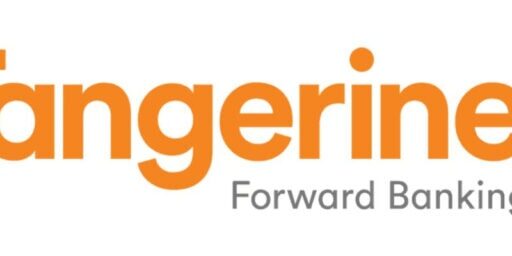The High Cost of the Manulife One Mortgage
One of my older posts regarding the Manulife One Mortgage is still generating a lot of discussion. Basically it’s a battle between the convenience of having all your banking and debt under one account vs. the extra premium that you pay for the privilege.
To quickly summarize the Manulife One mortgage, it’s a giant HELOC that encompasses your mortgage, chequing/savings and other debt. The biggest advantages being convenience and the ability to have your extra cash flow working against the mortgage. The disadvantages being the higher cost relative to getting a regular discounted variable rate mortgage.
Don’t get me wrong, I can see how these accounts can be very convenient to the entrepreneur with variable cash flow. It allows them to lower their monthly mortgage payments to interest only when cash flow is lower, and the ability to make lump sum payments when times are good.
However, for the every day person, is there really any advantage to the Manulife One product? From the many calculations done by the readers (check out the comments in the m1 mortgage thread), it’s apparent that the Manulife One mortgage is much more expensive than obtaining a discounted variable mortgage.
Below is a table based on a $250,000 $200,000, 25 year mortgage created by our resident calculator guru, Cannon Fodder:
| Mortgage Type (based on 25 yr mortgage) | Interest Rate | Monthly Payments | Total Debt Paid | Additional Cost |
| Semi-Annual Compounding | 4.75% | $1,418.64 | $425,591 | — |
| Monthly Compounding | 4.75% | $1,425.29 | $427,589 | $1,998 |
| Manulife M1 | 4.75% | $1,438.39 | $431,518 | $5,927 |
| Manulife M1 w/payment at end of month | 4.75% | $1,443.95 | $433,187 | $7,596 |
| Semi-Annual Compounding | 5.75% | $1,562.56 | $468,765 | — |
| Monthly Compounding | 5.75% | $1,572.77 | $471,828 | $3,063 |
| Manulife M1 | 5.75% | $1,581.48 | $474,444 | $5,679 |
| Manulife M1 w/payment at end of month | 5.75% | $1,588.89 | $476,666 | $7,901 |
| Semi-Annual Compounding (prime – 0.90%) | 3.85% | $1,294.80 | $388,441 | — |
| Monthly Compounding (Canadian Tire FS) | 3.85% | $1,298.97 | $389,693 | $1,252 |
| Manulife M1 | 4.75% | $1,438.39 | $431,518 | $43,077 |
| Manulife M1 w/payment at end of month | 4.75% | $1,443.95 | $433,187 | $44,746 |
Here are a couple of key points about the table above, the M1 calculations include the monthly fee of $14/month (free for professionals). The last few rows are what’s really significant in terms of cost difference between a discounted variable rate vs the Manulife One mortgage. You’ll notice that for a $250,000 25 yr mortgage @ todays rates, you’d end up paying over $43,000 more for the M1 mortgage over a traditional discounted variable.
My opinion is that if you want the convenience of having a HELOC but want the best bang for your buck, then consider going with a discounted variable readvanceable mortgage. That way, you’ll get the best variable price for the installment portion along with a growing HELOC to use as you please.
Any thoughts?
I've Completed My Million Dollar Journey. Let Me Guide You Through Yours!
Sign up below to get a copy of our free eBook: Can I Retire Yet?










The flawed perspective of this post is they assume you use the ManulifeOne the same as you would a mortgage, but it is not intended to be used that way, so it makes zero sense. If you compare the ManulifeOne as intended, as your primary bank chequing account, and you have the correct income and expense ratios, you will 100% save interest costs despite the higher rate, in most case saving over $200K in interest and paying that 25 year mortgage off in less than 10 years. So please don’t just compare it to a regular mortgage when it is not to be sold that way. :). That comparison is useless to consumers.
Hi,
Im in a job where I can be posted regularly and may not want to but at next location (I.e Goose Bay) ?. If I got the M1 HELOC, would I be spared fees assoc. With early payment of mortgage? My mort renewal is in 4 months and my banker recommends 3 year variable where I would pay 3x months interest upon sale of house. Thanks.
At the end of 2014, M1 is still one of the better deals out there for paying down your home faster.
Rules have changes a bit since inception, but essentially works the same, with the exception that you have 15% of the total loan which requires payment and is not available to the borrower. Also, the need to have 20% down upon opening an account (at a minimum) also means that not everyone will qualify for an M1.
The rates are a bit higher than a typical mortgage, but given the very low interest rate, and ability to transfer a portion of the main lump sum into a low fixed rate, you really can’t go wrong.
This is STILL an account for the fiscally responsible. After paying into the account, it’s really easy to see that “available” credit as free money (which it’s not).
For us, it was a great decision because the house we bought did not have a finished basement. Because we did a lot of the work ourselves, we had the option of borrowing against this LOC to pay for supplies and the as-needed contractors. Very convenient and the M1 interest rate was at least 1% lower than most of the LOCs currently offered through other banks these days.
How old are these posts here? Because I am not sure if what was discussed so far is still applicable today….
I’ve read most of them, trying to figure out if an account like Manulife One would be better than a HELOC, used as a daily checquing account.
Basically, get a HELOC for the value of the mortgage, and have all your paychecques and additional income to go there. Wouldn’t this be the same as an All-in-one account, but with lower interest rate???
I have a variable P-0.75 mortgage with CIBC right now (with two years left on the five year term), but I was considering the other options available.
We have the M1, and paid off our $220,000 mortgage in 7 years. We have some disposable income which helps. This mortgage is not for people living paycheck to paycheck or those who think that you will always have a car payment and a house payment for the rest of your life. We set a goal that any extra income goes to our M1 account. Yes the interest rate is higher, and there is a monthly fee, but I’m pretty sure most savings and chequing accounts also have monthly fees. My monthly fee is unlimited. I will gladly pay more interest and monthly fees to have the freedom to pay off my mortgage, and save literally tens of thousands of dollars in interest. We now also have the ability to make purchases, a car, vacation, etc. without having additional loan payments. I’m also a person who thinks its better to buy a used car at $15,000 dollars, putting it on M1 and paying interest (knowing that I will have that paid back off in a minimum of a year, rather than buy a new car at $30,000, at 0 percent interest, but payments for 7 years.
For this account to work effectively you must have a certain level of extra income at the end of the month. We had a friend who used this account and after a year had to return to a traditional one because he owed more, using the extra value as spending money.
I think you also have to keep in mind, that this account is the only one I need, most people also carry credit cards, and loan payments at ridiculous interest rates. With this account, you don’t necessarily need those….
I found it very amusing that a lot of people on this thread got very hung upon the $14 monthly fee for M1 account or the fact it is a P+1%… :-)
First of all, M1 has a lower rate even though it’s P+1% (note, every bank set their own prime rate and this is why you shop around for mortgages). It has been 3.75% for quite a few months now, while National Bank All-in-One is at 4% and TD variable open (which I assume it’s what they use for HELC) is 3.8%. Run those delta against a small mortgage like $100,000 and the argument for the $14/month fee should just go away.
I have my doubts about the math used in this article – it doesn’t make a lot of sense to me and I would love to see the formulas behind it.
Personally, I signed up for M1 because it gives me a lot of flexibility to manage my finance. Yes, discipline is required, but the flexibility allows me to put in as much cash as I have without having to worry about the over-contribution limit in the traditional mortgage and my mortgage was paid off within 5 years of switching to M1 after spending 4 years doing the traditional mortgage (bi-weekly payment, 18 years amortization and etc) and saw my mortgage decreased way too slow to my liking (the mortgage payment went against mostly interests payments instead of the principal). In addition, M1 allows you to have virtual sub-accounts that you can use it to fund “Investments” and generate additional income from the equity of your home while deducting the interest you paid to earn those income.
M1 was sold primarily through advisors (and apparently I was one of the few who called them up directly) and the idea was the advisor will help the client to manage their spending habit and M1 would be part of the tool to enhance the client’s financial wealth. M1 can only help you pay off your mortgage faster if you are a disciplined saver. I know of a friend who signed up for M1 before I did and never did make any head wave on his mortgage ‘cos he just treat it as a credit card with large limit… :-(
Just open a Heloc at TD and you can do everything the manulife one account does and you don’t have to pay the $14/month…Including setting up your direct deposits going into the heloc and putting it on your debit card.
Great Article.
I have done some long an hard thinking and their are benefits to both sides. This is what I have on the table.
RBC (my bank)
Is offering a 243k mortgage 5 year variable -0.90 off prime which puts me at 2.10 today. Weekly payments of $204.00 with the option of doubling this payment every week and a maximum of 10% additional principal payment each year.
M1
Is offering no monthly fee 243k account with 3.5% interest calculated daily. Like any other LOC you can get a letter in the mail saying “in 60 days your rate is now 4.2%” and in another 60 days “we are increasing your rate to 5.5%”. They control the rate and can change it at anytime.
After reading the posts above you can tell there’s a lot of M1 sales guys posting. The key points I’m hearing is M1 is better cause you can pay off your mortgage faster if you have focus.
In the proposal I have on the table, at anytime, I can jump right in and dump another 200 or 400 or 600 towards principal and plan to do so with the benefit of holding the 2.1 interest rate.
The painful part of this option is knowing the first 5 years the bank is getting paid. With M1 you can pay it all today and its done. The huge problem here is M1 can change your rate to 8% tomorrow and you can’t do a single thing about it. Another problem is you can take a vacation tomorrow and dip till your hearts content.
I’m not in a position of paying off my mortgage in 5 years so M1 and RBC will be getting paid. The difference is M1 will be getting more as there charging more now and will always charge more. I still have the freedom to add as much to principle as I can now with RBC as with M1.
If you don’t have the focus to do this, can you imagine what that individual will do with an M1? They’ll have the M1 account for 30 years with the exact same balance on their.
I agree with Frugal Trader and DaveRamsey.com.
If MOST Canadians were disciplined there would NOT be so much credit card debt.
Just heard this year, January 2011, that Canadians have gone into EVEN more debt than before since the financial crunch seems over.
I wonder if MOne contributed to that debt?
Mietek, we use a sub account for the rental unit. Works fantastically. You absolutely deduct the interest from your rental income, along with a long list of other expenses. As far as M1 is concerned, it keeps track of all the interest charged on your sub-account. On the last day of every month you will be charged interest on your sub-account and on that same day the interest amount will be paid from your main account.
Good luck with your endeavor!